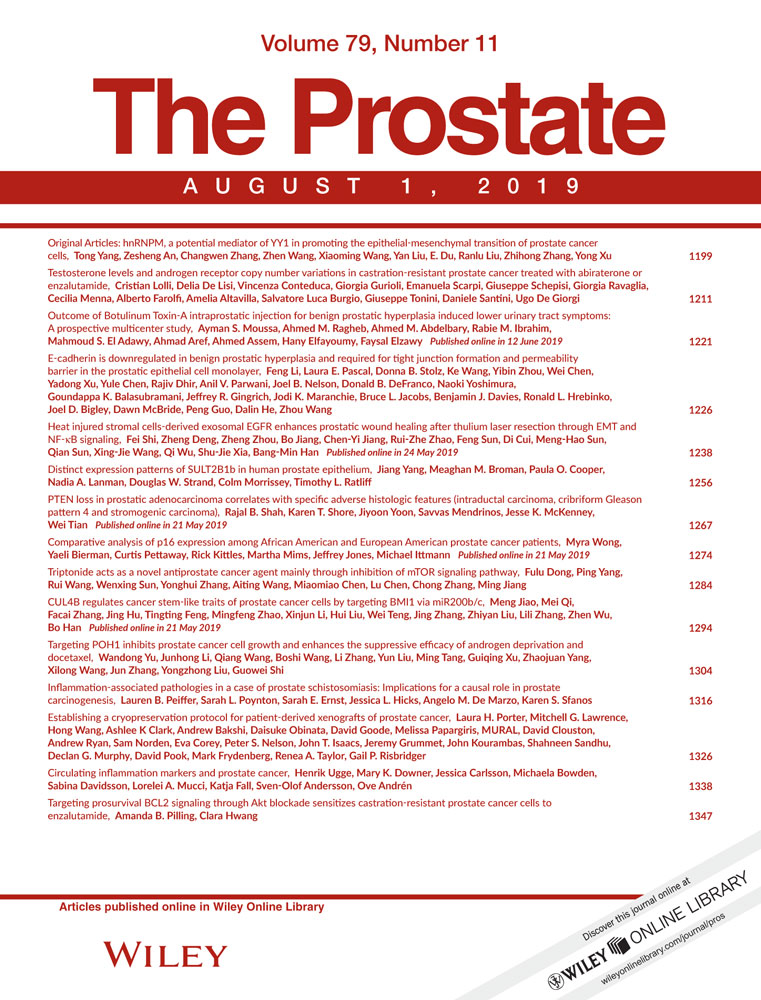Testosterone levels and androgen receptor copy number variations in castration-resistant prostate cancer treated with abiraterone or enzalutamide
Lolli and Lisi have contributed equally as first authors.
Abstract
Purpose
Our study aims to investigate the association between copy number of the androgen receptor (AR) and testosterone levels in metastatic castration-resistant prostate cancer (mCRPC) treated with second-generation antiandrogen therapies.
Materials and Methods
We retrospectively collected data from mCRPC treated with abiraterone acetate and enzalutamide. Serum testosterone levels were collected at baseline, at 3 months since the start of therapy and at disease progression. A cohort of cases treated with docetaxel was also used to evaluate the impact of testosterone levels.
Results
Patients treated with abiraterone with AR copy number aberrations and basal testosterone levels below 0.09 nmol/L had worse progression-free survival (PFS) compared to patients with no AR copy number abnormalities (8.5 vs 2.9 months, P = 0.005). No relevant differences were observed in the enzalutamide group with a PFS of 3.9 months (no AR gain) vs 2.7 months ( AR gain, P = 0.004) for patients with below 0.09 nmol/L testosterone levels. Similar results are obtained for univariate analysis for overall survival (OS). The negative prognostic role of AR copy number gain in OS for both treatment groups (25.5 vs 10.6 months, P = 0.0002 for abiraterone and 14.1 vs 8.3 months, P = 0.031 for enzalutamide) was confirmed, and it was recognized the negative prognostic impact of testosteronemia below 0.09 only for patients treated with enzalutamide (8.8 vs 42.8 months, P = 0.016). On multivariate analysis for patients treated with abiraterone, low testosterone levels below 0.09 and plasma AR gain were significantly associated with worse PFS and OS. These data are confirmed in the enzalutamide group for PFS.
Conclusions
Testosterone levels and the AR copy number alterations were considered as independent prognostic factors. The results of this study show that serum testosteronemia associated with changes in copy number of AR gene could represent a noninvasive biomarker useful to identify a subgroup of patients with worse prognosis that can benefit less from second-generation antiandrogen therapies in the mCRPC setting.
CONFLICT OF INTERESTS
Vincenza Conteduca and Ugo De Giorgi received speaker honoraria or travel support from Astellas, Janssen-Cilag, Bayer, and Sanofi Aventis. Giuseppe Tonini received honoraria for Advisory Board from Novartis, Pfizer, Italfarmaco, and Roche. Cristian Lolli received travel support from Janssen-Cilag. The other authors declare no conflict of interests.




